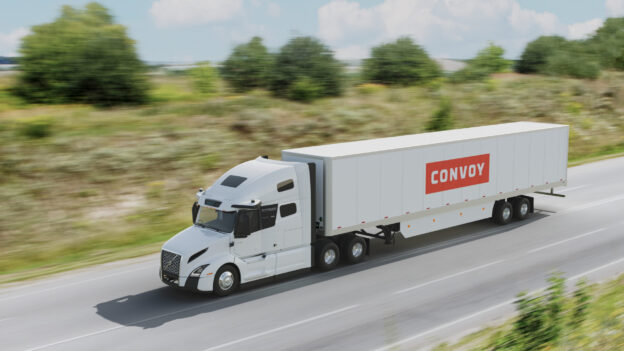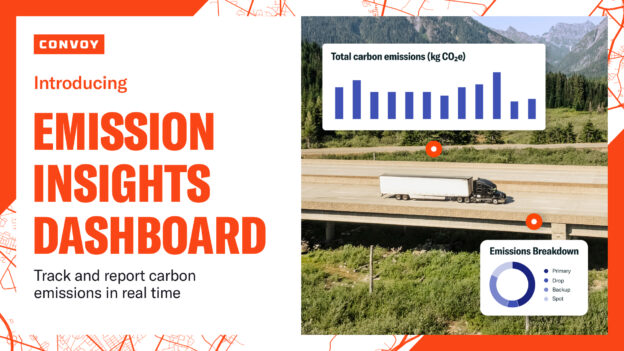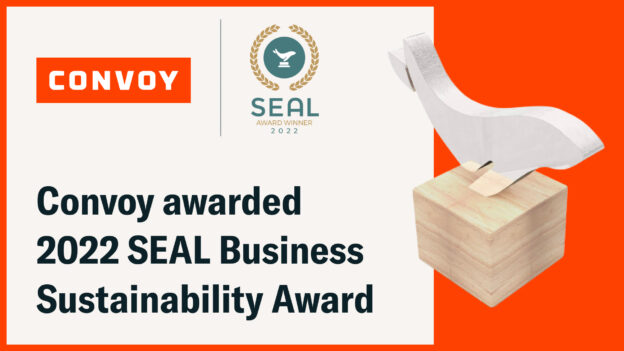What the Future of Sustainability Looks Like
Sustainability • Published on July 26, 2021
There is no one way to manage a sustainability agenda at a company — be it large or small. From startups to international retailers, how sustainability shows up in a business will vary from organization to organization. Consider the fact that there are myriad factors impacting an operation from the proper procedure to harvest raw materials to the impact of manufacturing on the local community, packaging, recycling, transportation, and more.
Many of the sustainability executives I spoke with on our Business of Sustainability interview series have shared their viewpoints on what the future of sustainability looks like and how companies will need to act as we move forward. While their business models vary, the one thing they all share, however, is a commitment to doing the right thing and finding ways to be more sustainable for the long term. Their key takeaways include:
- Set High Standards And Hold Yourselves To Them. Kyle Polansky, CEO of Blue Dog Bakery: “We don’t set hard lines and look out and say, we want to accomplish this or that. We generally hold ourselves to a non-GMO ingredient list. And that’s really hard to do. As you expand your product portfolio and grow, it can be harder and harder to do. There is a cost associated with that and you have to be really resourceful to go chase the solutions down. Do we have big long-term goals that we set up and say, hey, we’re working toward this? Maybe not. But we try to set very high standards and hold ourselves to them as we make progress. As life evolves and business evolves and you have success, that becomes harder and harder to do. So, I think really holding dear to those core values that we started with — healthier options for pet parents and their animals and doing it in the most sustainable, world healthy way — is what keeps us pushing the envelope.”
- Focus On Recycling Plastic And Supporting The Recycling Stream. Altium Packaging’s Brian Hankin, SVP Strategy, Innovation, Marketing at Altium Packaging and Sarah Dwyer, Sustainability Associate: “There’s a little bit of an anti-plastic sentiment out there. And we’re very much aware of it and concerned about it. Plastic is a good thing. For one thing, it meets essential needs better than any other material can in certain industries like healthcare delivery. In the food industry, food preparation and preservation and getting foods to areas where they need it. And also with consumer products, we think it is the best material and that is why there is so much of it and why it has grown so quickly. We need to do a much better job recycling and making sure there is enough supply in our recycling stream so we can meet these goals and be an efficient user of this material which we feel is an excellent alternative. Plastic right now is the suitable choice of material as it provides significantly less carbon dioxide emissions. We have the infrastructure to support the recycling stream and recycle materials back into new packaging and products. In order to move the industry forward, there needs to be a higher level of consumer engagement with brands, and Altium, as well, can play a part in educating consumers on how to recycle and the benefits of plastic versus alternatives. ”
- Look Beyond The Obvious Sustainability Initiatives Josh Raglin, Chief Sustainability Officer at Norfolk Southern Corporation: “When we first thought about sustainability, it was more about environmental compliance. It was a little bit about fuel efficiency, and it was more about economic returns. Now it’s more about engagement with communities. It’s about using a different set of lenses when you look at projects, instead of just pure financial return. It’s really how you can create multiple values and create things in a different way. One example I’ll point to is our living shoreline project which was completed last year. We lost around three acres of land at our Lambert’s Point Terminal in Norfolk, Virginia, on the Chesapeake Bay at the Elizabeth River. We could have come in and developed this fully armored shoreline of rock, but what did we really accomplish from an environmental perspective? Instead, we partnered with a local conservation group to come up with a better plan to create a living shoreline with native vegetation. We restored the shoreline and it saved 75% of costs and we have this great habitat there and it’s much more aesthetically appealing because it’s along the main stretch of the river. Most of the products we consider, we look for cases where we can lower our environmental impact or produce revenue in some cases. They are good for the environment and good for communities.”
- Take A Step In A New Direction When Designing Footwear. Jess Bensley, Senior Product Line Manager at Teva, Deckers Brands: “The way footwear is constructed is just all of these layers and extra materials and glues and adhesives and it makes the product really hard to recycle. So, some things that need to happen to make shoes more recyclable is to simplify your product. There are a lot of things that don’t need to be in there. You’ll save money by taking them out and making it simpler and then also just looking at, if your upper is made of all one material then it will be able to be recycled. And if your bottom is made of EBA and rubber, that’s also able to be recycled. But it’s really how those two things are put together and that it needs to be able to come apart so that they’re recyclable in their own waste streams. And that’s definitely the design challenge in the footwear industry and it’s going to take us back to how shoes used to be made. They used to be cobbled together by a stitch that would be easy to take out and then those pieces came apart. So, we really just need to think about how footwear is being constructed to be able to make things more recyclable and I think that can be accomplished.”
- Redesign Packaging To Make It More Efficient. Julie Mishner, Product Manager at Jabil Packaging Solutions: “The big trend is the cubitization of products in order to have more efficient packaging. Even with eCommerce, it is imperative to fit more in a box to ship to your customers. It is an entirely new problem to solve.”
- Ensure Your Brand Helps Consumers Live Their Values. Kimberley Sundy, Director, Corporate Sustainability at Kellogg Company: “We know that consumers and people want to live their values through their purchases and this has become all the more apparent during COVID. Kellogg has purpose-driven brands and we’re really committed to making sure that our purpose-driven brands deliver for consumers and the planet. We really try to make sure our portfolio resonates with consumers the entire world over. We know that sustainability is a reputational driver. Our portfolio at Kellogg is 86% plant based, and when you think about the value of sustainability, it plays a really critical and important role and it really does touch consumers at every level and everyone across the business. Shoppers are demanding transparency and accountability. They want to know where their food comes from. Customers have been really aggressive in setting aspirational goals for themselves from a corporate perspective and we’ve been really aggressive in setting aspirational goals for ourselves. It’s been nice to be able to collaborate with them and find out where these ambitions overlap and how we can create value together.”
- Collaborate And Build Partnerships. Alan Turanski, President and Beekeeper of GloryBee: “We have clients we’ve been supplying for 45 years as well as newer ones. All of this has allowed us to change the conversation beyond an exchange of goods and services to something that we’re doing together. How can we do good together? That is really where the value is because when we do things together, we do things better. One of the things that happened with our Save the Bee initiative is in the first year, we brought in maybe $12,000 dollars from our 1% of sales around our retail products. It became clear to me that we needed to collaborate and build partnerships because this really wasn’t something that we should do on our own — this is something which affects all of us. So, we all need to get involved and doing it together quickly shifts results.”
- Maintain A Long-Term View On The Value Of Sustainability. Zach Freeze, the Senior Director, Strategic Initiatives, Sustainability at Walmart: “We know our customers care about sustainability and we know our customers care about climate and plastic waste elimination. It’s very connected to our approach of how to engage with the customer and what we view as long-term success. If you think about the definition of sustainability, we have to be able to continue to be able to put products on our shelves in the years to come and we depend on the planet to do that. We have to make sure we’re good stewards to the planet, and we’re taking care of that. We’re putting people and the planet first. And that’s intrinsically tied to our business mission. Our goal as a company and our tagline is very closely associated with that. Walmart sells products that are good for people, good for the planet and it goes all the way up to the top. Our CEO believes it and understands it and recognizes the connection to what he calls ‘shared value’, which is really about taking all stakeholder perspectives into consideration to make sure that we deliver for the customer, the investor, the associate, and the shareholder. We feel all of this can and should be done in order to be a truly sustainable company.”
- Listen To Consumer Demand. Ryan Emmons, Co-Founder & CEO at Waiākea: “Consumer demand for sustainable products is really what’s going to drive change. It’s going to be a couple of brands and plenty of others that are doing exceedingly well in beating out a lot of competitors in their categories. That’s going to make a lot of people start to question why, and if sustainability is a big part of that business model, they’re going to know why. That’s how you change. It’s when sustainability basically becomes the must have for capitalism. That shift is starting to happen right now because people are realizing that you can’t not address climate change, and you can’t not address sustainable packaging because you just won’t sell and I think we’re still kind of 5 years away from that big shift but we’ve definitely been starting to see that over the last 10 to 20 years.
- Thread Sustainability Initiatives Through All Aspects Of Your Business. Mia Davis, Director of Environmental and Social Responsibility at Credo Beauty: “Companies will always be learning and growing and revisiting how to incorporate sustainability into their business and weave it through a variety of programs like looking at packaging, or composting, or carpools, designing stores to reduce waste, shipping, etc. Depending upon how a business is set up, it’s important to try to thread sustainability at the store level, HQ, manufacturing, vendors, partners, etc.”



